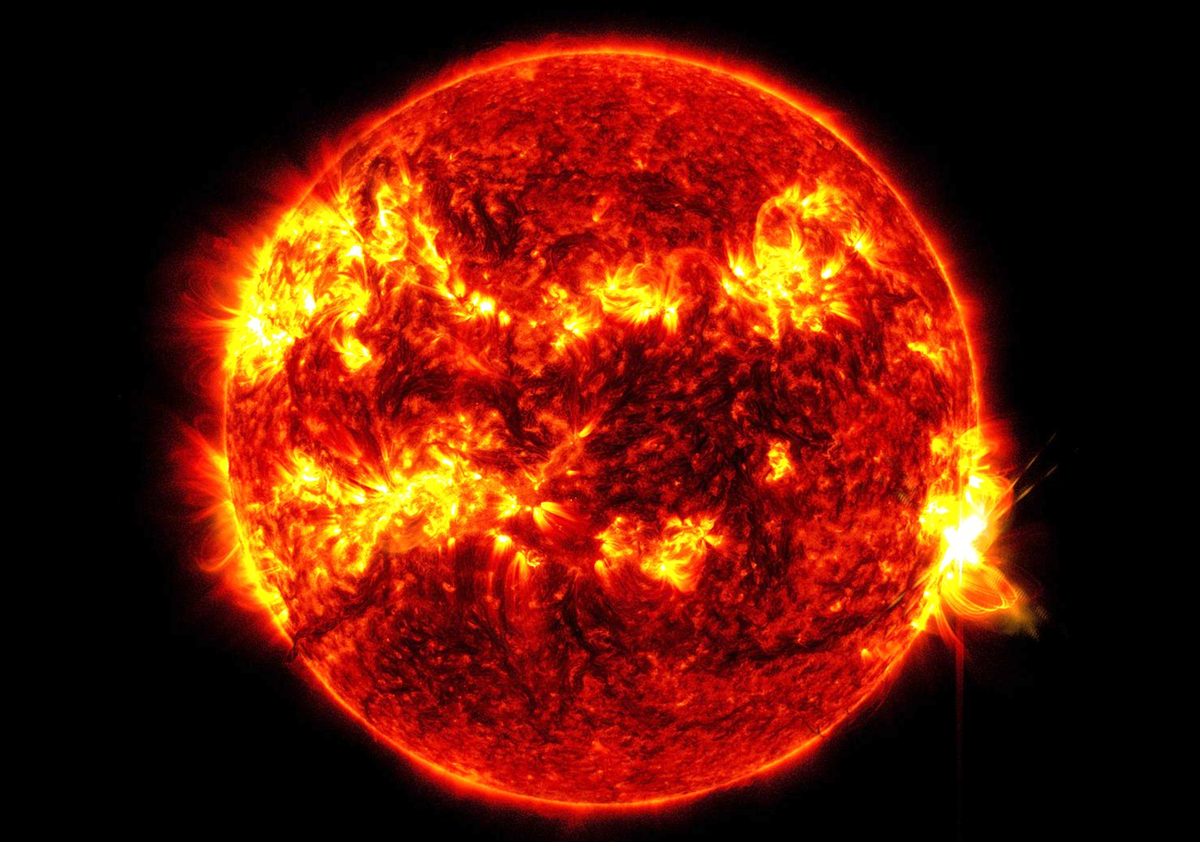The strongest solar flare in nearly a decade has erupted from the Sun, the US National Oceanic and Atmospheric Administration announced on Tuesday.
The mega category X8.7 flare is much stronger than the X2.2 one that erupted last week causing spectacular Northern Lights – or aurora borealis – displays in the UK, US, and most of the northern hemisphere last week.
However, the monster flare is not directed at the Earth, meaning sky watchers on Earth may not get dazzling views of auroras from this celestial phenomenon as was possible over the weekend, the agency said.
“This flare is classified as an X8.7 flare. X-class denotes the most intense flares, while the number provides more information about its strength,” the NOAA said.
Solar flares are powerful bursts of radiation from the Sun, which cannot pass through Earth’s atmosphere to affect humans directly, but when intense enough, can disturb the atmosphere and disrupt GPS and communications signals.
Last week’s solar flares led to “breathtaking” aurora displays, caused temporary blackouts, disrupted satellites, and even led to some flights being rerouted in the northern hemisphere.
SpaceX chief Elon Musk said his Starlink internet satellites were “under a lot of pressure” due to magnetic field disturbances on Earth caused by the solar storm.
While the latest flare and the one from last weekend originated from the same monster group of sunspots – from a Sun region 15 Earths wide — the highly energetic solar particle plumes (CME) from the latest one may not impact Earth and cause auroras.
“Region 3664 produced yet another X-ray flare as it moves beyond the Western solar limb!! This time, it was an X8.7 flare, the largest of this solar cycle! Due to its location, any CME associated with this flare will likely not have any geomagnetic impacts on Earth,” the NOAA said.
But radio blackouts may still be possible in some parts of the world, the American agency added.
Nasa’s Solar Dynamics Observatory satellite captured an intense flash of ultraviolet light on the Sun as the X8.7 flare peaked on Tuesday.
The latest flare is also the strongest yet unleashed from the Sun in its current 11-year cycle known as the solar maximum.
“The Sun’s activity waxes and wanes over a 11-year period known as the solar cycle. Solar cycle 25 began in December 2019 and is now approaching solar maximum — a period when eruptions like this one become more common,” the Solar Dynamics Observatory said in a post on X.
Scientists expect the Sun to reach the peak of this cycle sometime between late 2024 and early 2025.








